The Sketchbook Collective 2020: Artist Interviews Part 1
Posted by Cass Art on 5th Sep 2020
The Manchester School of Art Sketchbook Collective will be exhibiting alongside the 2020 Degree Show, a showcase of students, staff, schools, and teachers’ sketchbooks in an exciting and dynamic virtual display. The Sketchbook Prize celebrates and accentuates processes undertaken by each individual in the show, it highlights the methodologies, innovative ideas, the importance of process, experimentation, discovery and development and aims to evoke further thoughts, possibilities and generate responses from visitors to the shows. Founded in 2017 by a collective of multi-disciplinary international MA students at Manchester School of Art, the Sketchbook Prize offers a creative platform for designers, artists, architects, and makers to display their thinking process.
We're catching up with the prizewinners from this years exhibition, including some special Cass Art Special Mention winners which really caught our eye!
MANCHESTER SCHOOL OF ART, SKETCHBOOK COLLECTIVE:
CASS ART SPECIAL MENTION, NEEVE FLETCHER
Neeve Fletcher is a Printmaker studying at Manchester School of Art. Growing up in the wonderful edgelands of Manchester, surrounded by brownfield sites, overgrown forests and canal routes, Neeve is inspired by nature, folklore, historical oddities and natural wonders, that are central in her lino print practice.
Entering her sketchbook to the Sketchbook Collective Prize 2020, Neeve has gained the special Cass Art Mention for her fantastic printmaking work.
About her sketchbook submission Neeve says: this submission shows my deconstructed sketchbook, working in the world of linocut for my unit X Project. I wanted to explore and experiment with shapes and ink through the act of carving and pressing. My main source of inspiration has been nature, more specifically brownfield sites on the out edges of the cityscape. Having to be able to work from home during lockdown as allowed me to bleed out of my sketchbook and into my space around me, experimenting with different inks and textures.
Firstly Neeve, what’s the most important thing about keeping a sketchbook?
The most important thing about keeping a sketchbook is being able to jot down any potential ideas and having a physical way of constructing what’s going on in my head and somehow transforming that into developed ideas. As a printmaker, I find it really important to sketchbook my work as experimenting is what allows me to try new concepts and designs.
This has been an extraordinary time for art and design students. Away from University facilities, how has lockdown impacted your practice and has keeping a sketchbook been helpful in the last few months?
During lockdown unfortunately I’ve not had access to the university print rooms, where I’ve been able to use all the amazing equipment and inks available. However, working from home has allowed me to improvise and make a little nook printmaking space; a space of my own to bring my sketchbook sketches alive into prints.
The zoom meetings and phone calls I’ve had during term time with tutors and course mates has been a new experience but one I’ll never forget and luckily the support I’ve had from uni has been amazing.
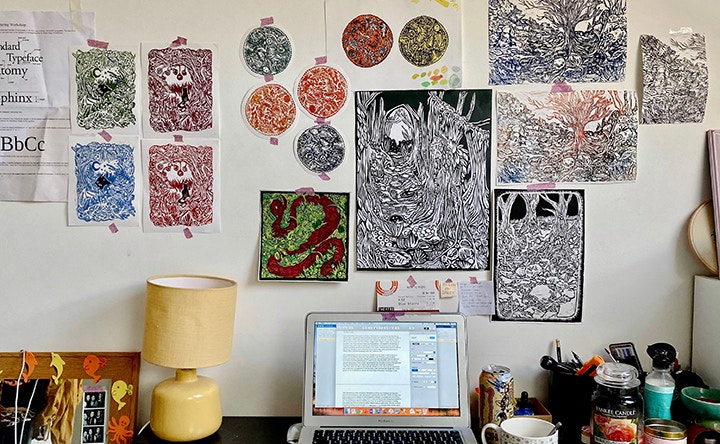
What led you to enter to the Sketchbook Collection and prize?
Going to the exhibitions in the art school for the Sketchbook Collective in the last couple years has really inspired my sketchbook practice and I really wanted to submit my own this year, due to the lockdown, that’s had to slightly change but overall I’m happy with the submission I sent.
What materials do you tend to experiment within your practice, and how do the materials you use in your sketchbook differ to those outside of it?
My practice is mainly Linocut printmaking, so my personal sketchbook is mostly ink tests and paper testing. I love experimenting with different marks and how they translate on paper.
And finally, are there any brands that you love to use?
I’m constantly on the search to find new tools and papers that I could use in linocut printmaking. I use speedball Lino cut blocks to carve my work and at the minute I’m using paper poetry Lino tools. I hope to save up though to invest in better equipment as I grow in my practice.
To view Neeve’s full submission at the Sketchbook Collective Prize 2020, visit: https://inprogress.mmu.ac.uk/neeve-fletcher/
Neeve’s website and Instagram:
https://neevefletcher.cargo.site
https://www.instagram.com/neevefletcher/
CASS ART SPECIAL MENTION AND THE SKETCHBOOK AS AN ART PIECE HIGHLY COMMENDED, RUTH FILDES
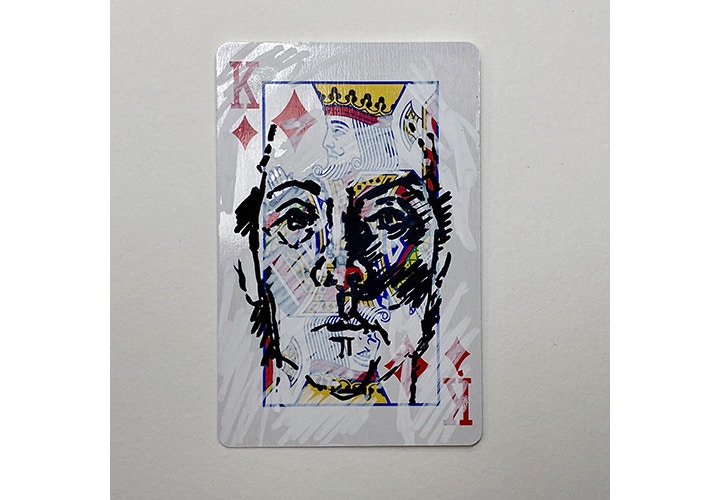
Ruth Fildes is the Head of Art at the Withington Girls’ School in Greater Manchester. Ruth describes herself as a fine artist, focusing her practice mainly on portraiture and more specifically on self-portraiture.
Ruth’s sketchbook has been gained the special Cass Art Mention and has also been Highly Commended for the Sketchbook as an Art piece category.
About her sketchbook submission Ruth says: being a set of fifty-two cards and corresponding to the number of weeks in a year, at the beginning of January I set about utilising a pack of playing cards to capture myself each week through a self-portrait drawing. I was interested in documenting the ups and downs of my feelings and my change of mood throughout the year. This has, of course, become even more intriguing a project due to this very turbulent and unprecedented year we are all experiencing.
Firstly Ruth, what’s the most important thing about keeping a sketchbook?
The freedom of expression that your own precious book brings is just magical and quite simply an artistic requirement for me! A sketchbook can be very public, but for most I think, including myself, it is very much a precious and personal treasure-trove for documenting life and experimenting with ideas. These ideas can sometimes be more surface-level media and material trials and tests, but actually for me, these experimentations are just a small part of what the main purpose of my sketchbook is all about, and that is self-expression. Having a space to collect, visualise, celebrate or overcome all of life’s ups and downs is priceless to me.
This has been an extraordinary time the education sector. How has lockdown impacted your practice and has keeping a sketchbook been helpful in the last few months?
Both positively and negatively is how I would describe the effect of confinement on my art practice over the last four months. The monumental changes that my life has gone through during the COVID-19 pandemic have of course had inevitable and lasting impressions on my artwork. I cannot seem to judge whether I have had more time or less time to make art, but what I can say is that I have made very different art and that my ideas, skills and journeys have also moved on at a much greater pace. At the beginning of this year I embarked upon a self-inflicted project which involved using a pack of playing cards to create a self-portrait study each week, of course the fifty-two cards in the pack correlate with the number of weeks in the year. The aim was to observe how my drawings and more specifically, the expressions and the manner in which I created them, changed over different periods of my life over the year, during which I was experiencing differing emotions and challenges. This project has become even more interesting of course due to the pandemic becoming such a monstrous part of my life.
I have continued to work in my many sketchbooks. This year I am part of a fantastic project in which artist teachers from around the country are paired up and create work each month in a sketchbook, and then it is passed on to be worked in by your partner during the following month. I have also created my own concertina book and filled it with very loose and lively drawings from the flowering plants in my garden during the period of sumptuous weather which we thankfully experienced whilst we were in full lockdown. This book in fact became the inspiration for a project which I set my students at school during their last half term of the academic year.
I have two other sketchbooks which I have also been working in; one which has mainly documented my son at home during lockdown and the other is a very small book indeed, measuring only 3cm x 6cm, which I have been taking on car journeys and capturing extremely quick and loose views from the car window as the towns and countryside flash by!
All my sketchbooks capture my life first-hand, direct from observation. I much prefer the spontaneity, the gestures, the pressure, I suppose, to get as much information down in the often-small amount of time that I have. I usually find that I become too tight and controlled in my technique if I would from a photograph, which for me, it's not what I am aiming for.
How are you dealing with being a teacher in the current times?
It has been challenging in all manner of ways, but overall, I am looking back now and seeing so many positives. I am very lucky indeed that I work for a truly amazing school with such dedicated and committed staff and such inspirational and hardworking students, all of whom have found how to make the very best of the situation and the opportunities that it has afforded us to learn new skills. I feel that one of the overarching developments in my teaching has of course been in the area of digital technology and, although I am absolutely looking forward to seeing my colleagues, students and of course artwork in the flesh, there will be some benefits of digital teaching and working that will feature in my work life from now on. Nothing will ever replace teaching Art face to face however, simply never!
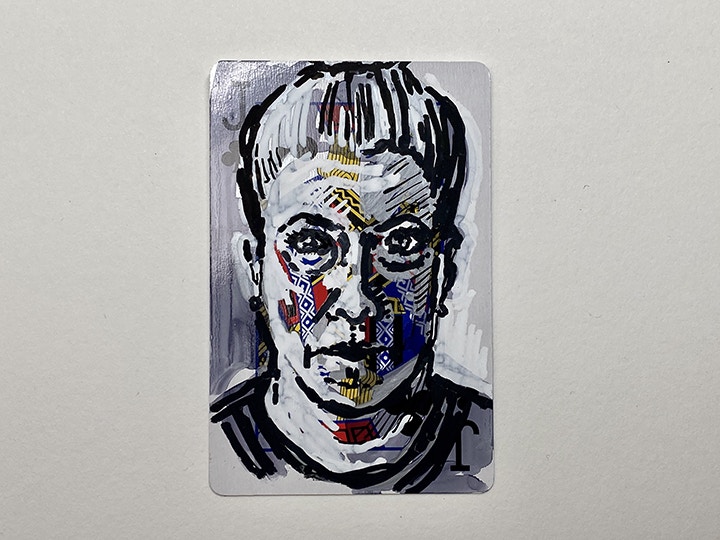
What led you to enter to the Sketchbook Collection and prize?
I was myself a student at Manchester School of Art many years ago when studying for my Art Foundation course and more recently I have competed my PGCE course and an Art Teacher’s Masters course at Manchester Metropolitan University and so I have very strong links with the university and it has a special place in my heart because of this. Also, with my current school being only a few minutes’ drive from Manchester School of Art, we have forged excellent links with the Outreach Department and have worked on many shared projects, workshops, talks and indeed many of my A Level students have followed in my footsteps and completed the Art Foundation course there. When I first heard about the sketchbook collection a few years ago, I wanted to support the project as I have always championed the use of sketchbooks with my students, and I have been very lucky to win the teacher’s prize for the past two years. I have thoroughly enjoyed following this year’s project on Instagram and although as I mentioned before, I don’t feel that fully digital/online art can ever replace physical art, I feel that the project this year has expanded and improved in so many ways and become more accessible to so many more people because of lockdown restrictions on their usual competition which forms part of their annual degree shows.
What materials do you tend to experiment within your practice, and how do the materials you use in your sketchbook differ to those outside of it?
Being a teacher and covering an extremely wide range of media and materials with my students inevitably leads me to experimenting widely with a similar range of techniques and ideas within my own work, which has so many positives, but I feel it also might hinder me finding a stronger artistic voice due to the breadth of my experimentation. I would probably describe myself as a fine artist, although I trained as an illustrator and worked as a graphic designer, and I usually work two-dimensionally, often focusing on portraiture and more specifically self-portraiture. But more recently I have been creating some self-portraits using second-hand dolls and creating armour-like extensions and additions to these sculptures using wire and ceramics. I have thoroughly enjoyed working three-dimensionally, which is of course something which is near-impossible in a sketchbook, and I feel that these sculptural forms have so many possibilities for development, so much so that I am ‘chomping at the bit’ to get back to these. I feel that these unusual tactile objects can help me to capture and express the thoughts and feelings that I desire to evoke in a more visceral and impactful manner.
I have also been taking part in the online ‘Portraits for NHS Heroes’ project in which I have been creating larger paintings which I have thoroughly enjoyed, and usually do not get the opportunity/time to create due to working as a Head of Art as this ordinarily takes up the lion’s share of my time when not looking after my son. In more normal circumstances as a very busy mother and teacher, sketchbooks are a much more manageable and realistic way that I can continue with my own artwork.
And finally, are there any brands that you love to use?
In terms of sketchbooks, I do use a wide variety of brands because I love to experiment and challenge myself with differing, and more unusual if I can, shapes, surfaces and styles. I do love Moleskine sketchbooks partially due to the fact that I am seduced by the very tactile nature of the rounded corners and the soft covers. Their concertina and tiny pocket-sized book are a real must for me too! Seawhite concertina books are amazing too! I have been using Michael Harding Oil paints and am enjoying the richness and strength of the colours. I have been using Cass Art’s very own hog bristle brushes for my recent oil paintings for the ‘Portraits for NHS Heroes’ project on Instagram. Other drawing equipment I have been using a lot of recently, in combination with each other, are Posca pens, Prismacolur pencils and Caran D’Ache Neocolor crayons. The vibrancy and strength of the colours are wonderful!
To view Ruth’s full submission at the Sketchbook Collective Prize 2020, visit: https://inprogress.mmu.ac.uk/ruth-fildes-2/
Ruth’s Instagram:
https://www.instagram.com/ruth_fildes_artist/
DIGITAL SKETCHBOOK HIGHLY COMMENDED, ALICE KELL
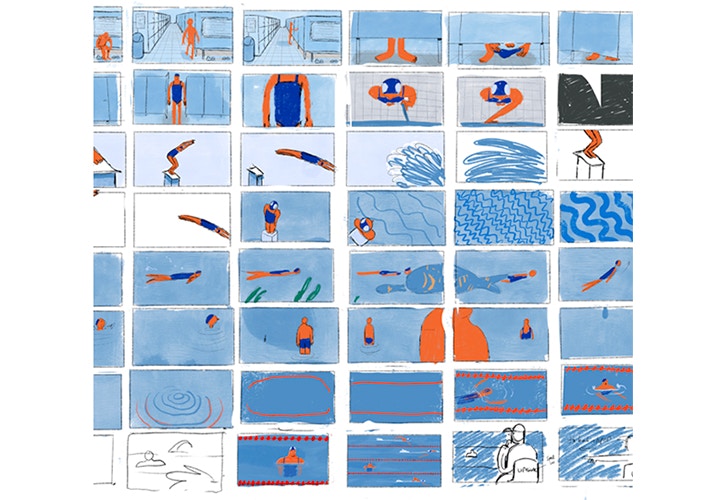
Alice Kell is a 2020 Graduate in Illustration with Animation at Manchester School of Art.
The foundation of Alice’s practice is built on observation and drawing. For her final year project, Alice made an animation about dyslexia. The aim was to empower those with this learning difference and educate those who do not understand what it means to be dyslexic.
Entering her sketchbook to the Sketchbook Collective Prize 2020, Alice has won the Documentation: Thinking in a Sketchbook Prize and has been Highly Commended in the Digital Sketchbook category.
About her submission, Alice says: my intention for this digital sketchbook was to document the process of creating a 2-3-minute animation for audiences with dyslexia and for audiences who do not know much about dyslexia. The aim is to empower those with this learning difference and educate those who do not understand what it means to be dyslexic. This was a self-driven project however I have the intention of organisations such as Made by Dyslexia being potential clients.
Firstly Alice, what’s the most important thing about keeping a sketchbook?
I think it is important to keep a sketchbook because it is an area to store and document thoughts. It’s a place that shouldn't be judged and not necessarily shown to anyone, it's a very personal space for me and I think it's important to feel safe in the sketchbook and not put too much pressure on yourself. I also think it’s a very portable way of documenting day to day life and is an essential part of my practice.
This has been an extraordinary time art and design students. Away from University facilities, how has lockdown impacted your practice and has keeping a sketchbook been helpful in the last few months?
Having a sketchbook with me all the time has been very helpful during lockdown especially when I had to move back home to the United States. It's the most portable part of my studio and an integral part of my practice. Because of this, it meant that it wasn't too much of a hard transition to continue my work when I moved to the States from University. I often have had lots of sketchbooks on the go at one time, one for writing down thoughts and another for observational drawing. So, in terms of practicality of keeping my project up and running keeping a sketchbook was good because it's a portable piece of my studio and in terms of my mental health, my observation sketchbook is useful because I do drawings to calm myself and stay grounded.
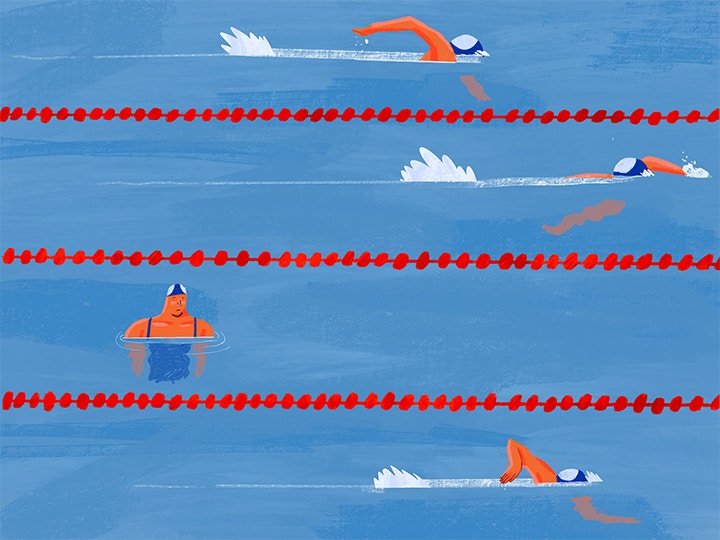
How are you dealing with being a graduate in the current times?
I'm very lucky that I have a MA programme at the Royal College of Art starting in September, so I don’t need to be thinking about post Uni life immediately. I have been applying to jobs in between graduating and starting my masters so in that sense I think I'm dealing with it quite well. But this transition was made easier because I was very aware how scary it might feel post-graduating. So, when I was at University, I made sure I got lots of work and practical experience that I could apply in the real world.
What led you to enter to the Sketchbook Collection and prize?
I wanted to enter the Sketchbook Prize because for as long as I can remember keeping a sketchbook has been integral to my practice and it's something that I am proud of my ability in and is a very strong part of my practice. I think I also use a sketchbook in more of an unconventional way compared to how people are taught in school. I really refined my own way of using sketchbook and I want to share this with people and encourage them to be less precious about what they doing their sketchbook and use it as a tool rather than a place to present work, it should be a messy area that you shouldn't be concerned about showing other people because it's a place for ideas to grow and develop.
What materials do you tend to experiment within your practice, and how do the materials you use in your sketchbook differ to those outside of it?
I like to work in animation, 3D and on a large scale so lot of that those final products can't be manifested in a sketchbook however the Foundation of my work is rooted in the ideas behind it and creatively rethinking myself around problems. I like to think my work is not limited by a strict set of materials, however every project does without fail start in a sketchbook. In my sketchbook I use traditional Media such as pencil crayon paint and 2D Media collage as well as a lot of mind maps.
And finally, are there any brands that you love to use?
I have a soft spot for anything Moleskine. I think they're sketchbooks are so well made and really nice to use however they do tend to be quite expensive so as a backup I tend to you Seawhite or Cass Art sketchbooks.
To view Alice’s full submission at the Sketchbook Collective Prize 2020, visit: https://inprogress.mmu.ac.uk/alice-kell/
Alice’s website and Instagram:
THINKING IN A SKETCHBOOK HIGHLY COMMENDED, CHLOE WATTS
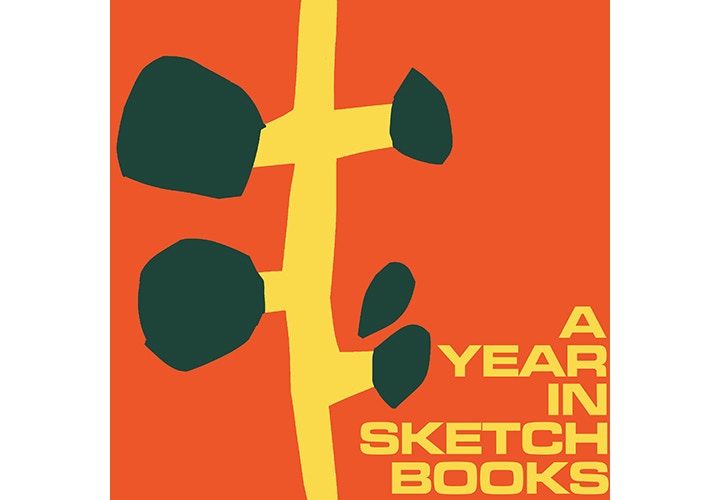
Chloe Watts is currently studying Illustration with Animation at Manchester School of Art. Chloe works with bold shapes and colours and her work is mainly autobiographical, documenting her own journey. In her practice Chloe focuses on thoughts, feelings and emotions.
Chloe’s work has been Highly Commended in the Thinking in a Sketchbook category.
About the sketchbooks she submitted, Chloe says: I have created a video showing the chronology of my sketchbooks for the year, documenting both my progression and thoughts. I have submitted my sketchbooks as an entity, because whilst they are for individual projects, they show the journey that I have been on in my first year at uni. I hope that you can see from my sketchbooks just how much I have enjoyed this year.
Firstly Chloe, what’s the most important thing about keeping a sketchbook?
I have documented my work in sketchbooks since I made the decision to pursue art back in 2017, having just recovered from anorexia. Since then, I have been thoroughly documenting my thoughts and processes in sketchbooks. I have chosen to do this because I share a special connection with my work, and I feel as though I am documenting my journey through life and recovery from mental illness. I find it to be helpful to be able to look back and critique my old work, but to also repurpose or develop previous pieces. My practice has become a sort of self-instigated therapy, as I am able to delve quite deeply into my thoughts and feelings. Documenting my work in the way that I do means that I can really explain the meaning behind my work, because I like my work to feel purposeful.
This has been an extraordinary time art and design students. Away from University facilities, how has lockdown impacted your practice and has keeping a sketchbook been helpful in the last few months?
Lockdown meant that I had to change the way I worked. I had been juggling university with my job, and this had been quite difficult at times. When lockdown started, I panicked, and felt quite lost in what I wanted to do for my last project. However, I found that setting up a workspace helped me to refocus. Keeping my sketchbook throughout the project enabled me to create a routine for myself- in that I would experiment first, and then document this towards the end of the day. Keeping my sketchbook through lockdown also meant that I was able to vent my uncertainty and ambivalence during that time.
How are you dealing with being a student in the current times?
At present, being a student has in some ways meant that I am quite lucky- in that I'm not in a career and my job is in the balance. However, I have found more than anything that I miss the facilities at University, and also the atmosphere. Money wise, things haven't been great, but I have been receiving furlough pay. The lockdown also meant that due to my place of work being closed, I ended up with a lot of time to develop and think about my practice.
What led you to enter to the Sketchbook Collection and prize?
Before I went to Manchester School of Art, I had really aspired to go there, and knew a lot of people there, so I did see that the Sketchbook Prize existed. I knew that given the way I use my sketchbooks; I would want to submit them to the prize. I chose the 'Thinking in a Sketchbook' category, because my sketchbooks document a great deal of my thoughts and processes, so it felt like the right category. I compiled my sketchbooks from the year into one submission because I thought it would be interesting to see the journey that this year has taken me on.
What materials do you tend to experiment within your practice, and how do the materials you use in your sketchbook differ to those outside of it?
In my practice, I use a variety of materials. I particularly like making my own tools, for example, I sharpen the ends of my paint brushes to use as dip pens. The main materials I use are oil pastels, colouring pencils, gouache and paint pens. I like to use messy materials outside of my sketchbook, and then I will document the piece in a neater fashion in my sketchbook. I will also use the materials stated previously in tandem with digital methods- like Photoshop and Procreate. I also like to collage a lot, so am often keeping old receipts and leaflets to repurpose.
And finally, are there any brands that you love to use?
My favourite brands to use are- Faber Castell (Polychromes pencils and Pitt artist pens), Posca Pens, and Caran D'Ache (gouache palette and NeocolorII Pastels). All of these materials are able to create very bright and bold colours which is key to my practice.
To view Chloe’s full submission at the Sketchbook Collective Prize 2020, visit: https://inprogress.mmu.ac.uk/chloe-watts/
Chloe’s Instagram:




